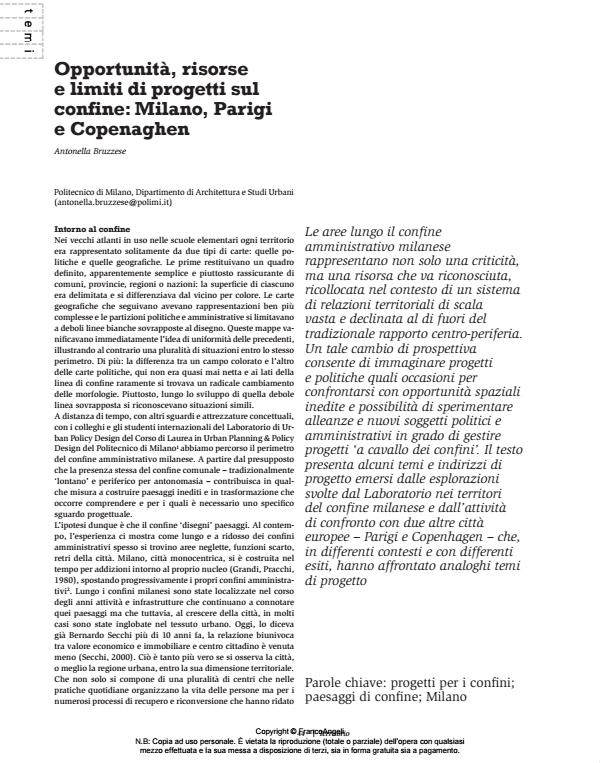Opportunities, resources and the limits of border projects: Milan, Paris and Copenhagen
Journal title TERRITORIO
Author/s Antonella Bruzzese
Publishing Year 2014 Issue 2013/67
Language Italian Pages 9 P. 44-52 File size 5553 KB
DOI 10.3280/TR2013-067008
DOI is like a bar code for intellectual property: to have more infomation
click here
Below, you can see the article first page
If you want to buy this article in PDF format, you can do it, following the instructions to buy download credits

FrancoAngeli is member of Publishers International Linking Association, Inc (PILA), a not-for-profit association which run the CrossRef service enabling links to and from online scholarly content.
The areas along the administrative borders of Milan not only represent problems, but also a resource which must be recognised and relocated in the context of a system of large-scale regional relationships and interpreted outside the traditional centre-periphery relationship. A change of perspective of this type allows projects and policies to be imagined as opportunities to seriously consider unique spatial opportunities and the possibility of experimenting with new alliances and with new political and administrative entities that are able to manage projects ‘across borders’. The paper addresses subjects and project ideas that emerged from the explorations performed by the Urban Policy Design Workshop in the Milan border areas and from a comparison with two other European cities - Paris and Copenhagen - which have addressed similar project ideas in different contexts and with different outcomes.
Keywords: Projects for borders; border landscapes; Milan
Antonella Bruzzese, Opportunità, risorse e limiti di progetti sul confine: Milano, Parigi e Copenaghen in "TERRITORIO" 67/2013, pp 44-52, DOI: 10.3280/TR2013-067008